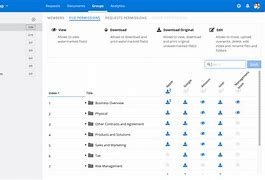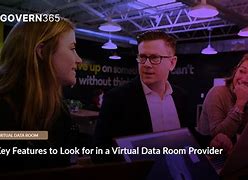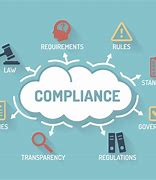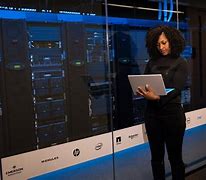

Virtual data rooms (VDRs) have become an essential tool for businesses involved in mergers & acquisitions, due diligence, and other sensitive data sharing processes. But amidst the increasing popularity of VDRs, numerous myths and misconceptions have also emerged. These myths can often deter companies from leveraging the full potential of this technology. This article debunks 5 common myths about virtual data rooms that you shouldn’t believe.
One common misconception is that VDRs are expensive and only suitable for large enterprises. In reality, VDR providers offer a range of flexible pricing plans, catering to businesses of all sizes. You can choose a plan that aligns with your budget & data storage needs.
Another persistent myth is that VDRs are complex and difficult to use. However, most modern VDRs have intuitive interfaces that are easy to navigate. VDR providers also offer comprehensive training and support, ensuring a smooth transition to this technology.
Furthermore, some people mistakenly believe that VDRs are less secure than traditional physical data rooms. In fact, VDRs provide advanced security features, including encryption, access controls, audit trails, and multi-factor authentication. They’re equipped to safeguard sensitive information against unauthorized access.
The belief that VDRs can’t be integrated with other business applications is also inaccurate. VDRs often seamlessly integrate with popular project management, collaboration, and document management platforms. This interoperability ensures that you can manage all aspects of your data room from within your existing workflows.
Finally, some companies believe that VDRs are solely for legal & financial transactions. But VDRs are versatile and can be used across various industries and departments. From intellectual property management to internal audits, VDRs offer secure and efficient data sharing capabilities, regardless of your business requirements.
In conclusion, understanding and dispelling these common myths about VDRs is crucial for organizations to effectively leverage their benefits. By embracing this technology, businesses can streamline their data sharing processes, improve collaboration, enhance security, and gain a competitive edge in today’s dynamic business landscape.
5 Myths About Virtual Data Rooms You Shouldn’t Believe
The business world is constantly evolving, and with it, new technologies are emerging to streamline processes and improve efficiency. One such technology is the Virtual Data Room (VDR), a secure online platform for storing, sharing, and managing sensitive documents. While VDRs offer numerous benefits, there are also several misideaions surrounding their use.
This article will debunk five common myths about virtual data rooms and highlight their importance for businesses of all sizes.
What is a Virtual Data Room?
A virtual data room, or VDR, is a secure online platform designed to facilitate the sharing and management of sensitive documents. VDRs are often used for due diligence, mergers and acquisitions (M&A), fundraising, and other business transactions that require secure and controlled access to confidential information.
What is a virtual data room used for?
VDRs are versatile tools with numerous applications. Here are some common uses:
- Due diligence: During M&A transactions, VDRs allow potential buyers to access confidential information about a company. This includes financial statements, contracts, and other sensitive data.
- Fundraising: When seeking funding, companies can use VDRs to securely share their business plan, financials, and other pertinent documents with potential investors.
- Legal and regulatory compliance: VDRs help organizations meet legal and regulatory requirements by providing a secure and auditable platform for storing and managing documents.
- Project collaboration: VDRs can facilitate collaboration on projects by providing a central location for storing and sharing files, as well as tracking progress and communication.
- Intellectual property management: Companies can use VDRs to manage and protect their intellectual property, including patents, trademarks, and copyrights.
How does a virtual data room work?
VDRs work by creating a secure online platform that allows users to upload, store, and share documents with controlled access. This typically involves:
- User authentication: Users must be authenticated before they can access the VDR. This is usually done through username and password, or two-factor authentication.
- Document control: VDRs offer tools for managing document access, including setting permissions for varied users and tracking who has viewed or downloaded specific documents.
- Watermarking and encryption: Documents stored in a VDR are often watermarked and encrypted to prevent unauthorized use and ensure data integrity.
- Audit trails: VDRs maintain detailed logs of all activities, including user access, document downloads, and changes to permissions. This offers a clear audit trail that can be used for compliance purposes.
Myth #1: Virtual Data Rooms Are Only for Large Companies
While it’s true that VDRs have historically been popular among large corporations, this is no longer the case. With the increasing availability of affordable and user-friendly VDR solutions, small and medium-sized businesses (SMBs) are now reaping the benefits of these powerful tools.
What are the benefits of a virtual data room for small businesses?
VDRs offer numerous benefits for SMBs, including:
- Enhanced security: Protecting sensitive data is crucial for all businesses, but it’s especially crucial for smaller companies that may not have the resources to invest in robust security measures. VDRs offer a secure platform for storing and sharing confidential information, mitigating risks associated with data breaches.
- Improved efficiency: VDRs streamline processes and reduce administrative burdens by providing a central repository for all documents. This eliminates the need for email attachments and physical file sharing, saving time and effort.
- boostd transparency and accountability: VDRs enhance transparency by providing a clear audit trail of all activities. This helps build trust with investors, partners, and other stakeholders.
- Cost-efficacy: VDRs can actually help SMBs save money by reducing printing and postage costs, eliminating the need for physical data rooms, and improving efficiency.
How can virtual data rooms help with due diligence?
During due diligence, buyers need to access a vast amount of information from the target company. VDRs facilitate this process by:
- Organizing and centralizing documents: VDRs offer a structured and organized platform for storing all pertinent documents, making it easy for buyers to navigate and find the information they need.
- Streamlining communication: VDRs enable secure and efficient communication between buyers and sellers. Parties can exchange querys, comments, and requests directly within the platform.
- Controlling access and permissions: VDRs allow sellers to control who can access specific documents and restrict certain users from viewing sensitive information. This ensures that only authorized individuals have access to confidential data.
What are some examples of how small businesses can use virtual data rooms?
Here are some examples of how SMBs can leverage VDRs:
- A startup raising seed funding: A startup can use a VDR to securely share their business plan, financial projections, and other pertinent documents with potential investors.
- A small business selling its operations: A small business owner can use a VDR to offer potential buyers with access to financial records, contracts, and other pertinent information during the due diligence process.
- A technology company licensing its software: A technology company can use a VDR to securely share software documentation, source code, and other confidential information with potential licensees.
Myth #2: Virtual Data Rooms Are Expensive
While some VDR offerrs offer premium packages with advanced attributes, there are also affordable options available for businesses of all sizes.
What are the costs associated with using a virtual data room?
The cost of using a VDR varies depending on several factors, including:
- The offerr: varied VDR offerrs offer varying pricing structures and attribute sets.
- The size of the project: The number of users, documents, and storage space required will influence the price.
- The duration of the project: VDRs can be rented for a specific time period, with costs varying depending on the length of the project.
How can you save money using a virtual data room?
VDRs can actually help businesses save money in various ways:
- Eliminating printing and postage costs: VDRs eliminate the need for printing and sending physical documents, saving on paper, ink, and postage costs.
- Reducing administrative burdens: VDRs streamline workflows and reduce administrative overhead by providing a centralized platform for managing documents and communication.
- Improving efficiency: VDRs boost efficiency by facilitating faster due diligence processes, speeding up negotiations, and reducing the time it takes to close deals.
What are some ways to budget for a virtual data room?
When budgeting for a VDR, consider:
- Project scope: Determine the number of users, documents, and storage space required for your project.
- Duration: Estimate the length of the project and select a paid access plan that aligns with your timeline.
- attributes: determine the essential attributes you need and select a offerr that offers them at a reasonable price.
- Negotiate pricing: Don’t hesitate to negotiate with VDR offerrs to find a price that works for your budget.
Myth #3: Virtual Data Rooms Are Difficult to Use
VDRs are designed to be intuitive and user-friendly, even for users without technical expertise.
What are the attributes of a user-friendly virtual data room?
A user-friendly VDR typically offers:
- Intuitive interface: The platform should have a simple and intuitive interface that is easy to navigate.
- Drag-and-drop functionality: Users should be able to upload and organize documents easily using drag-and-drop functionality.
- Advanced search attributes: VDRs should have powerful search capabilities that allow users to quickly find specific documents based on search terms, metadata, or other criteria.
- Mobile accessibility: Users should be able to access the VDR from any device, including smartphones and tablets.
- thorough help resources: VDR offerrs should offer thorough help resources, including tutorials, FAQs, and live chat support.
How can you learn to use a virtual data room?
Most VDR offerrs offer training materials and resources to help users get started. This may include:
- Online tutorials: VDR offerrs typically offer online tutorials that walk users through the basics of using the platform.
- Demo accounts: Many VDR offerrs offer complimentary demo accounts that allow users to try out the platform before committing to a paid access.
- Live chat support: Most VDR offerrs offer live chat support that can assist users with any querys or issues they may encounter.
Are there any complimentary trials available for virtual data rooms?
Yes, many VDR offerrs offer complimentary trials that allow users to test out the platform before making a purchase. This is a great way to evaluate varied VDR offerrs and find one that meets your needs.
Myth #4: Virtual Data Rooms Are Not Secure
VDRs are designed with robust security attributes to protect sensitive data.
What are the security attributes of a virtual data room?
VDRs employ various security measures to safeguard sensitive information, including:
- Encryption: All data transmitted and stored within a VDR is encrypted using advanced algorithms, making it unreadable to unauthorized individuals.
- Access control: VDRs allow users to control access to documents and restrict access based on functions and permissions.
- Watermarking: Documents uploaded to a VDR are often watermarked with user information, making it difficult for unauthorized individuals to distribute or reproduce the documents.
- Audit trails: VDRs maintain detailed logs of all activities, including user access, document downloads, and changes to permissions. This offers a clear audit trail that can be used to track and investigate any suspicious activity.
- Two-factor authentication: VDRs often require two-factor authentication, adding an extra layer of security to user accounts.
- Compliance with industry standards: Reputable VDR offerrs comply with industry standards and regulations, such as ISO 27001 and SOC 2, to ensure data security and privacy.
How are virtual data rooms regulated?
VDRs are subject to various regulations, including:
- Data Protection Act (DPA): The DPA regulates the processing of personal data in the UK, requiring organizations to implement appropriate security measures to protect personal information.
- General Data Protection Regulation (GDPR): The GDPR is a thorough data protection regulation that applies to all companies that process personal data of individuals in the European Union.
- California Consumer Privacy Act (CCPA): The CCPA is a law that gives California residents more control over their personal information.
- Health Insurance Portability and Accountability Act (HIPAA): HIPAA is a US law that protects the privacy and security of protected health information.
What are some ways to ensure the security of your data in a virtual data room?
To ensure the security of your data in a VDR, consider:
- select a reputable offerr: select a VDR offerr with a proven track record of security and compliance.
- Review the offerr’s security policies: Thoroughly review the VDR offerr’s security policies and procedures to ensure they align with your organization’s requirements.
- Implement strong passwords: Encourage users to create strong passwords and use two-factor authentication.
- Limit access: Only grant access to sensitive documents to authorized individuals.
- Train users on security optimal practices: Educate users on security optimal practices to minimize the risk of data breaches.
Myth #5: Virtual Data Rooms Are Not Necessary
Failing to use a VDR can expose businesses to significant risks.
What are the risks of not using a virtual data room?
Not using a VDR can lead to several risks, including:
- Data breaches: Without a secure platform, sensitive information is vulnerable to unauthorized access and data breaches.
- Legal issues: Failure to protect confidential information can outcome in legal issues, including lawsuits for negligence or breach of contract.
- Loss of reputation: Data breaches and security incidents can damage a company’s reputation and erode customer trust.
- Missed opportunities: Companies that fail to utilize VDRs may miss out on opportunities for mergers, acquisitions, fundraising, and other business transactions that require secure document sharing.
- boostd costs: Lack of efficiency and security can lead to boostd costs due to legal fees, reputational damage, and lost business opportunities.
How can a virtual data room help you avoid legal issues?
VDRs help organizations avoid legal issues by:
- Ensuring data security: VDRs employ robust security measures to protect sensitive information, mitigating the risk of data breaches and legal liability.
- Providing an audit trail: VDRs maintain detailed logs of all activities, providing evidence of compliance with legal and regulatory requirements.
- Controlling access: VDRs allow organizations to control access to documents and restrict access based on functions and permissions, ensuring that only authorized individuals have access to sensitive information.
What are some examples of how a virtual data room can help you save time and money?
VDRs can help organizations save time and money by:
- Streamlining due diligence: VDRs facilitate efficient due diligence processes by providing a centralized platform for organizing, sharing, and managing documents.
- Reducing administrative burdens: VDRs streamline workflows and reduce administrative overhead by eliminating the need for physical file sharing and manual document management.
- Improving communication: VDRs facilitate secure and efficient communication between parties involved in business transactions, reducing time spent on emails and phone calls.
- Facilitating faster deal closure: VDRs can help expedite deal closure by streamlining due diligence and communication processes.
Conclusion
VDRs offer numerous benefits for businesses of all sizes. They offer a secure, efficient, and user-friendly platform for managing sensitive information and facilitating business transactions. By debunking common myths about VDRs, this article aims to encourage businesses to explore the potential of these powerful tools.
What are the benefits of using a virtual data room?
VDRs offer numerous benefits, including:
- Enhanced security: VDRs protect sensitive information from unauthorized access and data breaches.
- Improved efficiency: VDRs streamline workflows and reduce administrative burdens.
- boostd transparency and accountability: VDRs offer a clear audit trail of all activities.
- Cost-efficacy: VDRs can help organizations save money by reducing printing, postage, and administrative costs.
- Improved collaboration: VDRs facilitate collaboration by providing a central location for storing and sharing documents.
What are some tips for choosing the right virtual data room?
When choosing a VDR, consider:
- Security attributes: Ensure the offerr offers robust security attributes, including encryption, access control, and audit trails.
- User-friendliness: select a offerr with an intuitive interface that is easy to use.
- Pricing: select a offerr that offers a pricing structure that aligns with your budget.
- attributes: determine the essential attributes you need and select a offerr that offers them.
- Customer support: Ensure the offerr offers reliable customer support.
What are the next steps for getting started with a virtual data room?
Here are some next steps for getting started with a VDR:
- study VDR offerrs: Explore varied VDR offerrs and compare their attributes, pricing, and security measures.
- Request demos: Schedule demos with shortlisted offerrs to get a firsthand look at their platforms.
- select a offerr: select a VDR offerr that optimal meets your needs and budget.
- Set up your VDR: Once you’ve chosen a offerr, set up your VDR and start uploading documents.
- Train your team: Train your team on how to use the VDR and ensure they understand security optimal practices.
In conclusion, VDRs are essential tools for businesses seeking to improve efficiency, security, and collaboration. By debunking common myths and highlighting their numerous benefits, this article aims to encourage organizations to embrace the potential of VDRs and transform their business processes.





















